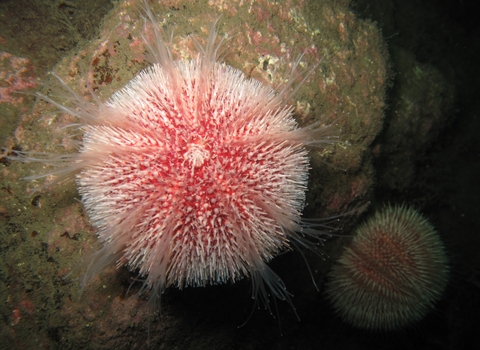
Edible sea urchin ©Polly Whyte/Earth in Focus
Edible sea urchin
This large round urchin is sometimes found in rockpools, recognisable by its pink spiky shell (known as a test).
Scientific name
Echinus esculentusWhen to see
January to DecemberTop facts
Category
Stats
Diameter: up to 15cm Average Lifespan: 5-10 yearsClassified as Near Threatened on the IUCN Red List.
